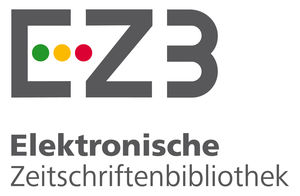<br>Tecnologias na aprendizagem da matemática: Mentoring, uma estratégia para a Formação de Professores<br>Technologies in mathematics learning: Mentoring, a strategy for teachers training
Palavras-chave:
Tecnologias, Formação de professores, MentoringResumo
A integração das tecnologias no ensino aprendizagem da matemática é amplamente recomendada. Embora se registe uma melhoria nos recursos tecnológicos nas escolas, em particular, no Brasil e em Portugal, esta tendência não é acompanhada por uma melhoria na utilização pedagógica das tecnologias em sala de aula. Os diversos relatórios da OCDE apontam para a necessidade de se continuar a investir na formação de professores para a utilização pedagógica das tecnologias. Neste artigo apresenta-se o caso de um futuro professor de matemática com uma sólida formação inicial no domínio das tecnologias que, ao iniciar a sua prática, revela dificuldades em integrar as tecnologias. O Mentoring surge como a estratégia adotada para apoiar este futuro professor na implementação das tecnologias na sua prática. O apoio constante em sala de aula com as tecnologias foi determinante na promoção do sucesso deste futuro professor na utilização de recursos tecnológicosReferências
ALCÂNTARA, L. A trajetória de desenvolvimento do professor na utilização de tecnologias nas aulas de matemática em um contexto de formação continuada. 2015. 178 f. Dissertação (Mestrado em Ensino) – Centro Universitário UNIVATES, Lajeado, 2015.
AMADO, N. O professor estagiário de Matemática e a integração das tecnologias na sala de aula – Relações de Mentoring em uma constelação de práticas. 2007. 712 f. Tese (Doutorado em Matemática – Especialidade de Didática da Matemática) – Universidade do Algarve, Faculdade de Ciências e Tecnologia, Faro, 2007.
AMADO, N.; SANCHEZ, J.; PINTO, J. A Utilização do Geogebra na Demonstração Matemática em Sala de Aula: o estudo da reta de Euler. Bolema. Boletim de Educação Matemática, v. 29, n. 52, p. 637-657, 2015.
BRASIL. Ministério da Educação. Secretaria da Educação Básica. Orientações curriculares para o ensino médio: ciências da natureza, matemática e suas tecnologias. Brasilia: MEC, 2006.
EVEN, R.; BALL, D. Setting the Stage for the ICMI Study on the Professional Education and Development of Teachers of Mathematics. In: EVEN, R.; BALL, D. (eds.). The Professional Education and Development of Teachers of Mathematics. New York: Springer, 2009.
FLICK, U. Métodos Qualitativos na Investigação Cientifica. Lisboa: Monitor Projectos e Edições, 2002.
GALBRAITH, P. ‘Life wasn’t meant to be easy’: separating wheat from chaff in technology aided learning? In: The 2nd International Conference on the teaching of mathematics (at the undergraduate level). Proceedings... Crete: University of Crete, 2002. Disponível em: http://www.math.uoc.gr/~ictm2/Proceedings/invGal.pdf. Acesso em: 10 dez. 2015.
GOOS, M. A sociocultural analysis of the development of pre-service and beginning teacher’s pedagogical identities as users of technology. Journal of Mathematics Teacher Education, n. 8, pp.35-59, 2005.
HYDE, R.; JONES, K. Developing pedagogical approaches to using digital Technologies in mathematics. In: HYDE, R.; EDWARDS, J. A. (eds.) Mentoring Mathematics Teachers: supporting and inspiring pre-service and newly qualified teachers. Abingdon: Routledge, 2014.
KOKOL-VOLJC, V. What makes a tool a pedagogical tool? In: T. TRIANDAFILLIDIS, T.; HATZIKIRIAKOU, K. (Eds.). The 6th International Conference Technology in Mathematics Teaching. Proceedings... Volos: University of Thessaly, 2003. pp. 92 – 96.
LAVE, J.; WENGER, E. Situated learning: legitimate peripheral participation. Cambridge: Cambridge University Press, 1991.
OCDE (2015a). Students, Computers and learning:making the connection. PISA, OCDE Publishing, Paris. doi.org/10.1787/978926423955.en. http://www.keepeek.com/Digital-Asset-Management/oecd/ education/students-computers-and-learning_9789264239555-en#. Acesso em: 10 dez. 2015.
OCDE (2015b). Education at a Glance 2015: OECD Indicators. OECD Publishing, Paris. http://www.oecd-ilibrary.org/education/education-at-a-glance-2015_eag-2015-en. Acesso em: 10 dez. 2015.
OCDE (2015c). Brazil. Education at a Glance 2015: OECD Indicators. OECD Publishing, Paris. http://www.keepeek.com/Digital-Asset-Management/oecd/education/education-at-a-glance-2015/brazil_eag-2015-46-en. Acesso em: 10 dez. 2015.
PATTON, M. How to use qualitative methods in evaluation. Newbury Park: Sage Publications, 1987.
PIERCE, R.; STACEY, K. Reflection on the changing pedagogical use of computer algebra systems: assistance for doing or learning mathematics? Journal of Computers in Mathematics and Science Teaching, v. 20, n. 2, pp. 143-161, 2001.
SANTOS, E. O computador e o professor: um contributo para o conhecimento das culturas profissionais de professores. Quadrante, v.9, n. 2, pp.55-81, 2000.
SMITH, D. How People Learn…Mathematics. The 2nd International Conference on the Teaching of Mathematics (at the Undergraduate level). Proceedings... Crete: University of Crete, 2002. Disponível em http://www.math.uoc.gr/~ictm2/Proceedings/invSmi.pdf. Acesso em: 10 dez. 2015.
SUNDLI, L. Mentoring – A new mantra for education? Teaching and Teacher Education, v. 23, pp. 201-214, 2007.
WANG, J.; ODELL, S. Mentored learning to teach according to Standards-Based Reform: a critical review. Review of Educational Research, v. 72, n.3, pp. 481-546, 2002.
Downloads
Publicado
Como Citar
Edição
Seção
Licença
Autores que publicam nesta revista concordam com os seguintes termos:- Autores mantém os direitos autorais e concedem à revista o direito de primeira publicação, com o trabalho simultaneamente licenciado sob a Licença Creative Commons Attribution que permite o compartilhamento do trabalho com reconhecimento da autoria e publicação inicial nesta revista.
- Autores têm autorização para assumir contratos adicionais separadamente, para distribuição não-exclusiva da versão do trabalho publicada nesta revista (ex.: publicar em repositório institucional ou como capítulo de livro), com reconhecimento de autoria e publicação inicial nesta revista.
- Autores têm permissão e são estimulados a publicar e distribuir seu trabalho online (ex.: em repositórios institucionais ou na sua página pessoal) a qualquer ponto antes ou durante o processo editorial, já que isso pode gerar alterações produtivas, bem como aumentar o impacto e a citação do trabalho publicado (Veja O Efeito do Acesso Livre).













